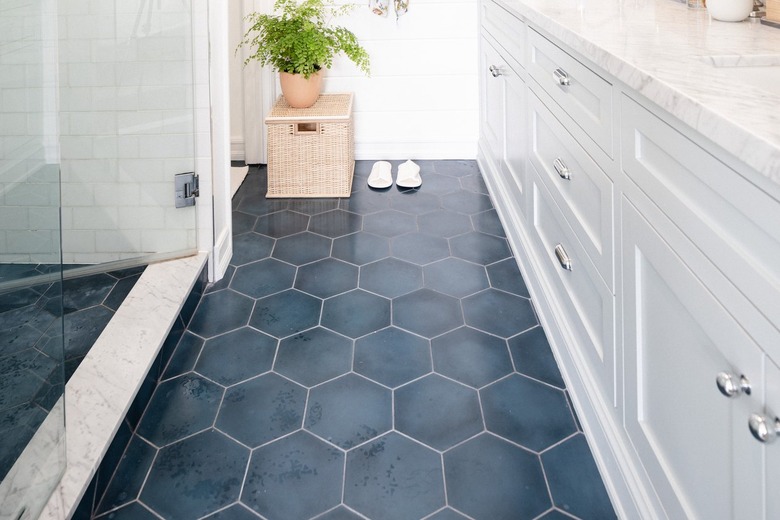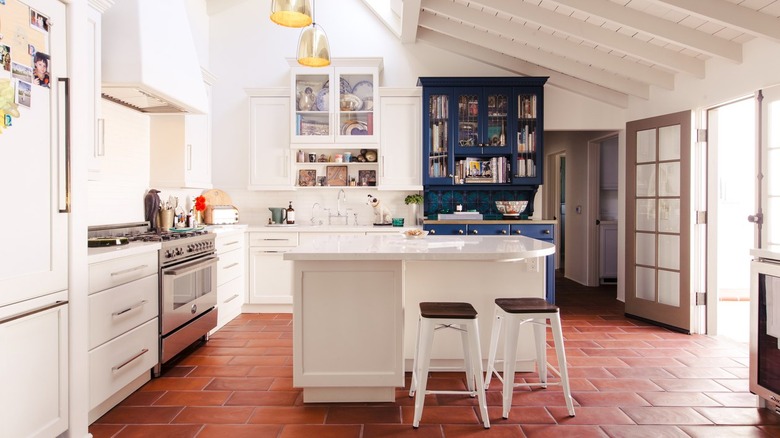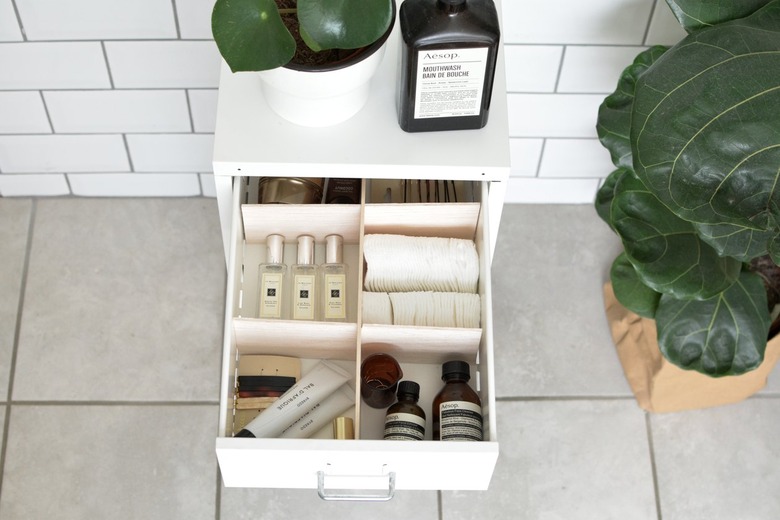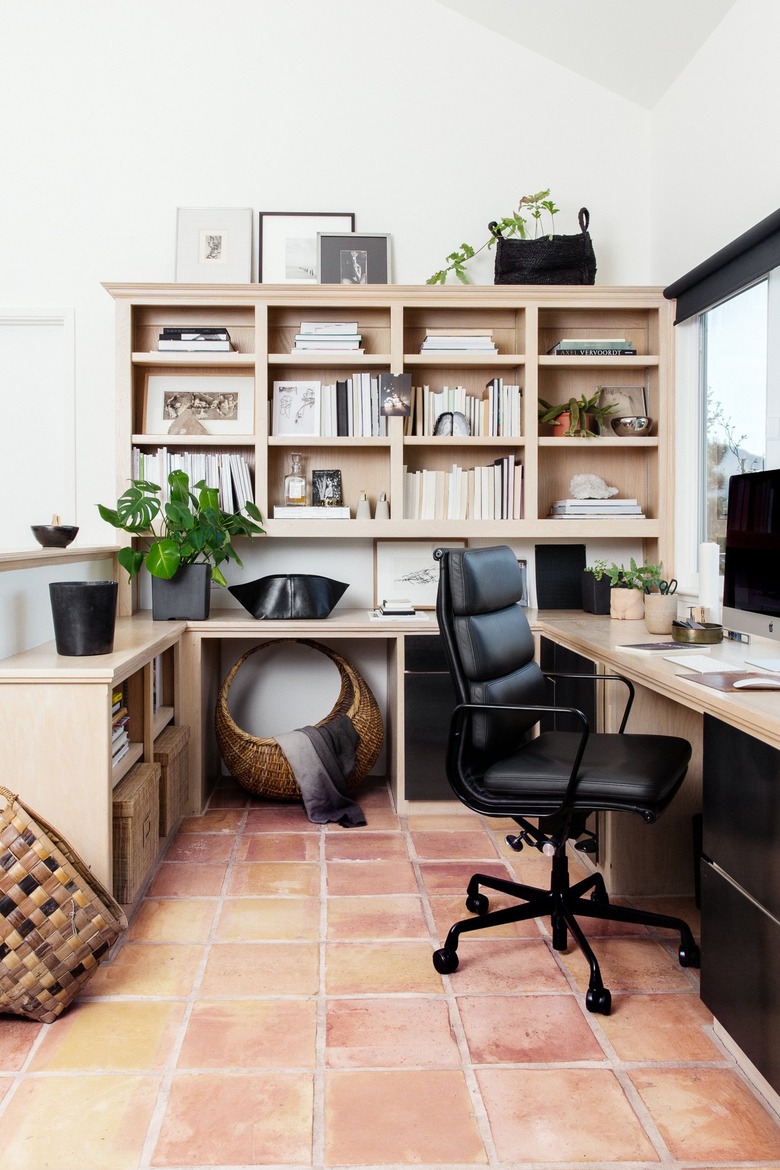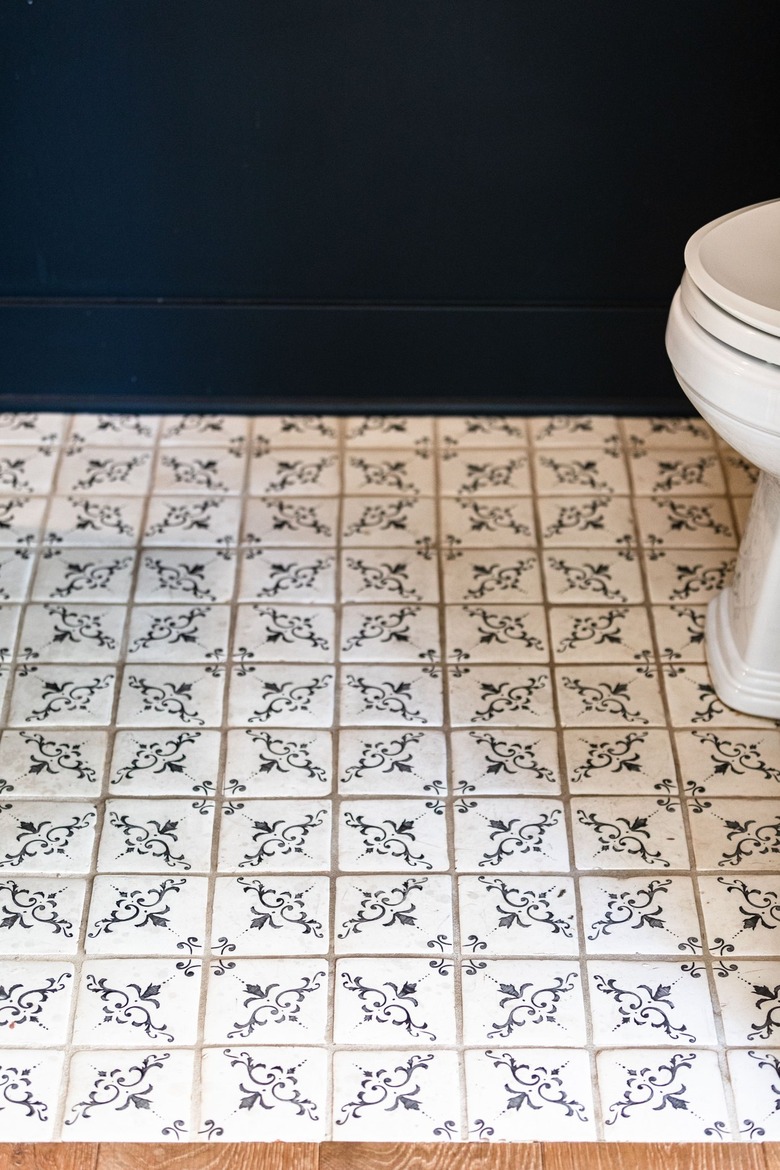A Homeowner's Guide To Ceramic Tile Floors
There are multiple reasons why ceramic tile is so popular for floors, especially in bathrooms and kitchens: among them, durability, ease of cleaning, beauty, and versatility. Ceramic tile has vast decorative potential since it comes in nearly every shade under the sun, in different sizes, in finishes from glossy to matte, and in almost unlimited patterns and textures. With ceramic tile you can have a Mediterranean-style mosaic exploding with vibrant color, or to go completely minimalist with a wide expanse in a gleaming, neutral tone.
Tile is also a good choice for flooring because it requires little maintenance (as long as it's glazed). Furthermore, tile is hypoallergenic; inhospitable to dust mites, bacteria, mold and other irritants; free of toxic chemicals such as formaldehyde and PVC; and it contains none of the volatile organic compounds (VOCs) that contribute to health problems. Lastly, because of its durability, tile is more affordable over time than any other flooring material.
To serve as floor tile, tile must be able to handle a certain load. If you see a tile defined as wall tile on its packaging or description, don't purchase it to install on floors—it's more fragile and won't withstand being walked on without breaking. Floor tiles must have an average breaking strength of 250 pounds. (That's the amount of weight a tile can withstand while unsupported before it snaps.) You can't repair broken tiles, but you can replace them.
When you go into a tile store or peruse tile online, you'll find so many styles, types, and applications that it's easy to feel bewildered, especially when you start looking at all the ratings on the packaging. Don't worry, you'll soon understand the basics. First, you'll need to understand that not all products loosely called ceramic tile are really ceramic tile.
Ceramic Tile
Ceramic tile is the most affordable type of tile. It's made from clay fired (hardened) in an oven, either with a glazed or unglazed surface. This broad category contains types with different physical properties—porcelain, terra cotta, and encaustic, for example, as well as ceramic. Ceramic tiles are usually the easiest to cut and to bond to the substrate, so they may be a better choice for a DIY project.
Porcelain Tile
The clay used to make porcelain tile is purer and more refined than that used for standard ceramic tile, and the clay is fired under greater pressure at higher temperatures. This results is tile that is denser, stronger, and less porous than standard ceramic tile. To be defined as porcelain, a tile must be impervious, which means it has a water absorption of 0.5% or less. This low porosity usually makes porcelain tiles frost resistant, though not always. It also makes them extremely stain resistant. Because porcelain is dense, it can withstand heavy foot traffic. However, it's harder to cut and to bond than ceramic tile. It requires a wet saw mounted with a porcelain diamond blade. Although it's more expensive than ceramic tile, don't confuse porcelain tile with the porcelain used to make fine china.
A recent development in this type of flooring is porcelain tile designed to look exactly like other materials, such as stone or wood. The resemblance is spot-on, but by installing this tile you get a floor that's far easier to maintain and much more durable than the material it imitates—especially the wood-look tile—at a lower cost.
Terra Cotta
Terra cotta tile is usually red, sometimes brown. This type of clay tile is very porous and lends a rustic look to a floor because it looks weathered. Since terra cotta can absorb liquids, it's best to seal it periodically, especially when it's installed in a kitchen.
Encaustic Tile
Encaustic tiles contain two or more colors of clay inlaid together to create a pattern. This style of tile has been around since the Middle Ages. It doesn't have the same glossiness as ceramic tile, and some encaustic tiles are made of cement, not clay. They may be prone to efflorescence, so they're not good for damp areas.
Natural Stone
Stone tiles are made of, well, stone: marble, granite, slate, travertine, limestone. They are not ceramic at all, and require more maintenance than ceramic tile.
Useful Terms to Know
Border tiles: Accent tiles that either edge or surround an area of plainer field tile; can also be used to separate two areas.
Cushion-edged tile: Tile with edges that curve, resulting in a slightly recessed joint.
Dynamic coefficient of friction: The measure of a surface's slipperiness, on a scale of 1 to 10, with 10 being the least slippery. Water, soap, oil, grease, and dirt on the surface will affect this value.
Efflorescence: A white residue on porous tiles caused by the migration of salts to the surface; always due to moisture.
Field tile: The tile primarily used in a broad area of floor.
Glaze: A vitreous substance fused onto the surface of a ceramic tile, forming a hard, waterproof, and decorative coating. Glaze may be may be clear or colored. Even if the color of the glaze layer differs from the clay beneath, the glaze is usually resistant enough to abrasion that it won't show wear under normal circumstances. The glaze fills in microscopic holes, which helps glazed tiles resist scratches and stains, and not fade in sunlight. Glazed tiles are generally easier to clean.
Honed: A tile with a satin surface.
Mosaic: Tiles or bits of tile smaller than 9 square inches that, arranged together, forming a design. Usually mounted on mesh sheets or strips. Can be made of ceramic, glass, or stone.
Pavers: Floor tile.
PEI rating: A numerical rating that indicates the strength of the tile; found on the product specifications/tear sheet. The thickness of the tile, its composition, and the temperature and duration of its firing all determine its strength. Developed by the Porcelain Enamel Institute (PEI), these ratings help the consumer determine which tiles are best for different uses, as follows:
- Group 0: Not suitable for floors, but just fine for walls.
- Group I, light traffic: For use only on residential bathroom floors, which experience bare feet or slippers, and for other areas that receive light use.
- Group II, medium traffic: Reserved for areas where normal, soft-soled shoes are worn but not recommended for kitchens, entryways, or stairwells, because those spots undergo heavy use.
- Group III, medium-heavy traffic: Suitable for any floor in the home, including kitchens and entries.
- Group IV, heavy traffic: These very hard tiles can withstand hard use in homes, as well as commercial settings such as hospitals and restaurants.
- Group V, extra-heavy traffic: Appropriate anywhere; a good choice for areas that experience moisture and abrasive dirt.
Porosity: A measure of how much water a tile can absorb.
Pressed floor tile: Tile made by pressing.
Quarry tile: Tile made by die-and-cut extrusion process, from natural materials such as clay, shale or feldspar.
Thin tile: Tile no thicker than 6.5 mm.
Through-body porcelain tile: An unglazed porcelain tile that's the same color through its entire thickness, so that it doesn't show signs of wear.
Tile panel/slab: Tile that is 1 meter square or larger.
Unglazed tile: A tile with no glaze on it. These usually have better slip resistance than glazed tiles.
